- Get link
- X
- Other Apps
- Get link
- X
- Other Apps

Since 2011, users (the previous generation) iMac began to observe on their displays a very unpleasant picture: on the perimeter of the image was covered with light "haze", on forums and in social networks began to appear reports of "dust and soot" under the glass iMac. But the most annoying thing for owners of apple candy bars was when they came to the service center to find out that dust was not falling under the protective glass and not on the surface of the matrix, but inside: between the active layers of the display, standard cleaning was not enough, many centers offered to change the display to a new one, which, incidentally, did not save us from the re-occurrence of the problem in a few months or a year ...
The trouble became typical, and soon experienced engineers with growing in the right direction mastered the technology of complete disassembly and cleaning of iMac matrices, which was much cheaper and (under the condition of additional sealing of the cleaned matrix) is more advantageous than replacement.
With the release of the new iMac line in a thin package in 2012, everyone was shocked by the unique design and performance of the devices, and experienced users looked at these monoblocks with hope also because now the iMac was equipped with a new generation display module, it does not have a detachable protective glass, it glued to the matrix, as in your iPhone.
For a long time, the matrix was considered absolutely undiluted and impermeable to dust, but from about mid-2013 the nightmare of all old iMacs returned: a large amount of dust gets to the bottom of the display (especially at the edges), which spoils the pleasure of using one of the best displays in the world.
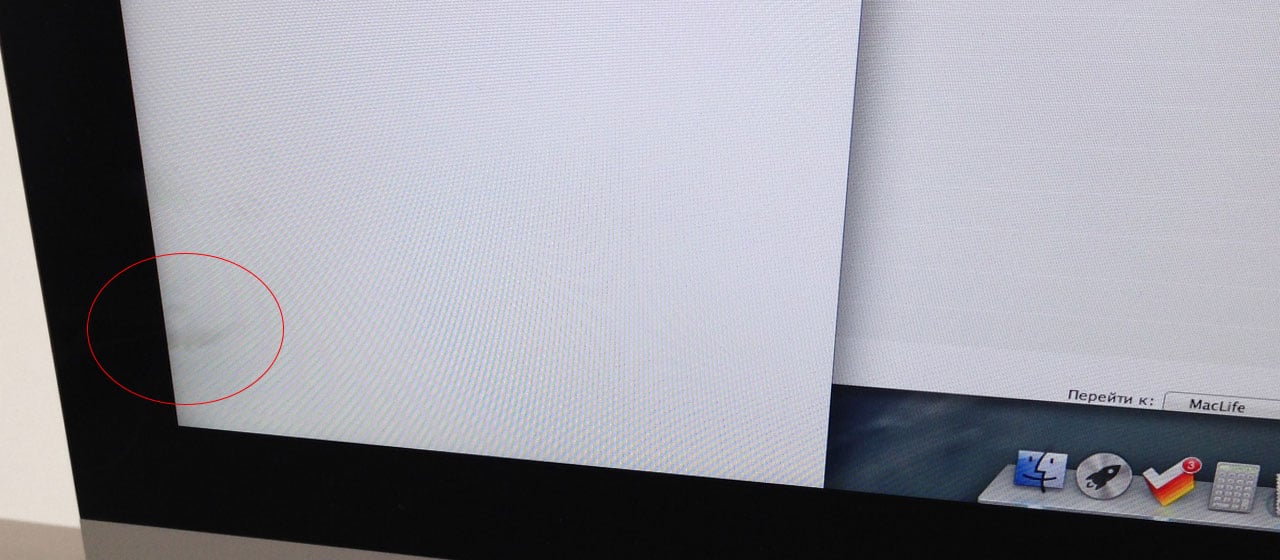
Our friends from the center of MacPlus decided to invite us to visit us after a dusty iMac, explained in detail and showed that repairing Apple is not only a modular replacement, even an officially unattended iMac 2012 release can be disassembled, removed all dust and prevented its reappearance on the screen. Our colleagues shared with Hi-News.ru readers detailed instructions on how to rid themselves of such problems.
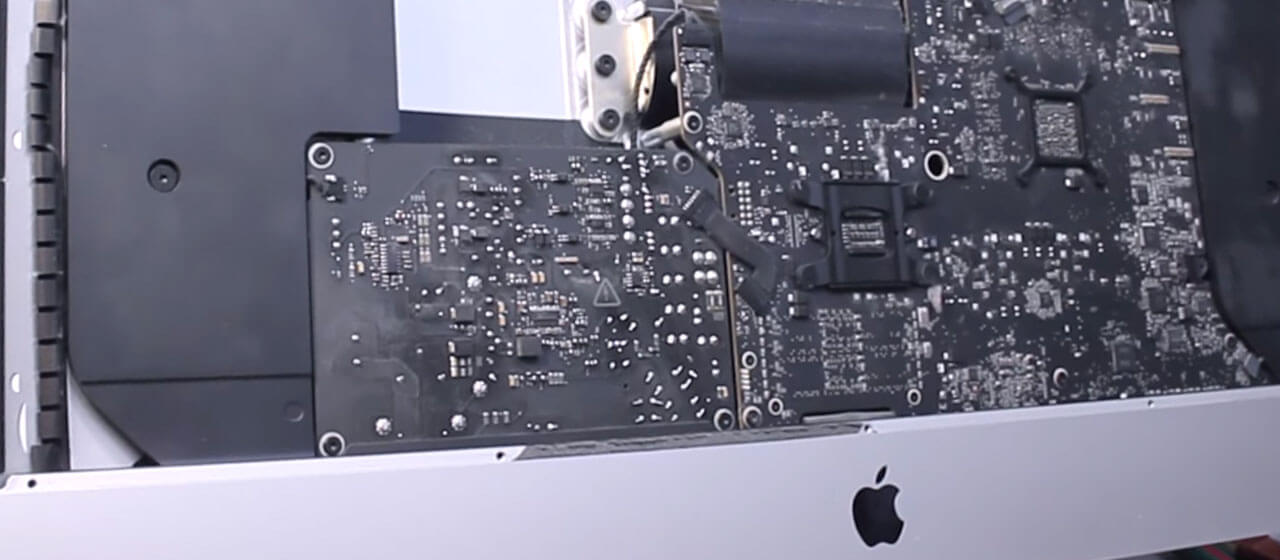
To begin with, of course, you need to remove the display module. It is attached to the body with double-sided tape. The factory uses a professional 3M tape, so do not recommend self-activity and use exactly the same when re-assembling, because Scotch tape - the only thing that keeps your dear in every sense, the display from falling.
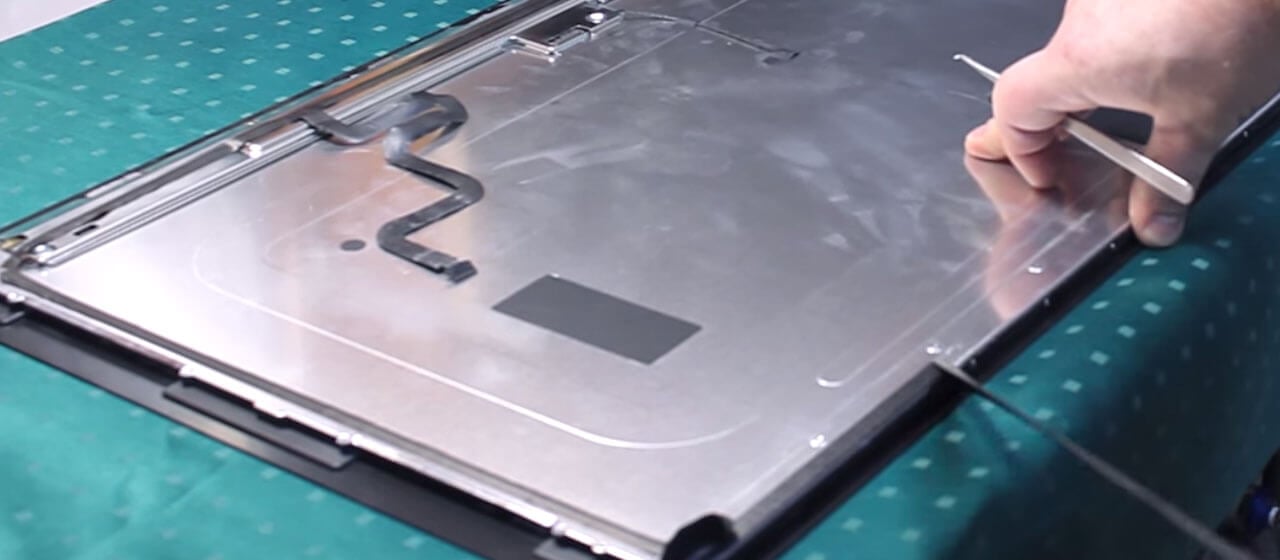
On the perimeter, the display module is glued with a protective fabric tape, which, according to the developers, was just to protect the weak points of the structure from the penetration of dust.
Below the tape are hidden fixing screws that hold the main body and light-scattering layers of the illumination system, part of the screws are under the decoder board's protective panel (right side of the illustration below). Unscrewing them is very accurate, as damaging the film loop or elements on the board itself will require a much more complicated repair or replacement of the display.
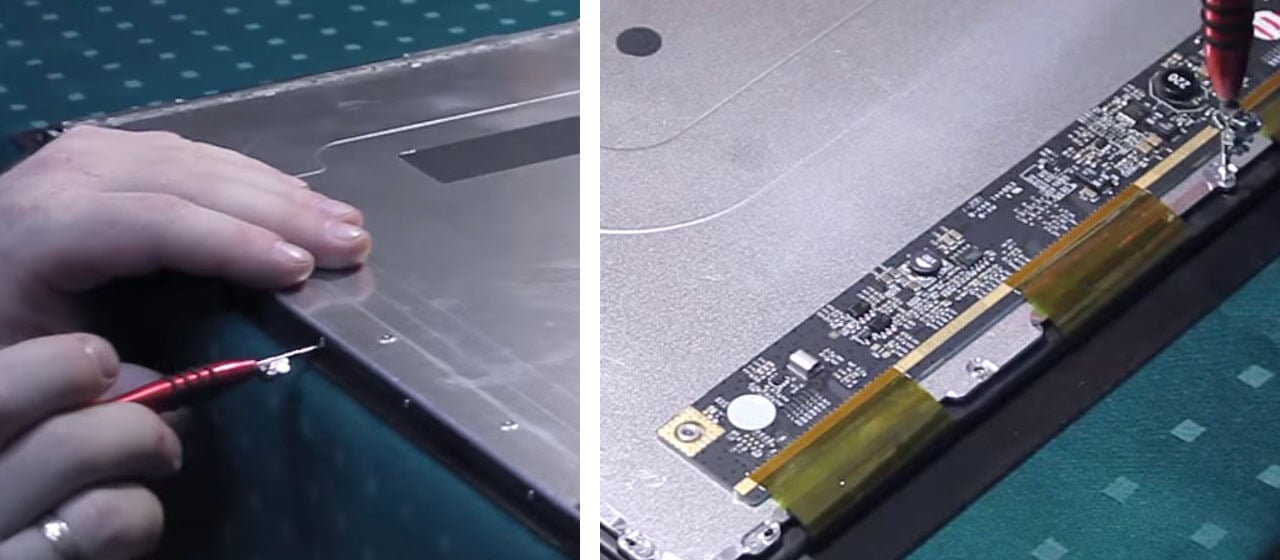
After dismantling the fixing screws and protective elements, you can carefully separate the active matrix layers from the main body of the display module.
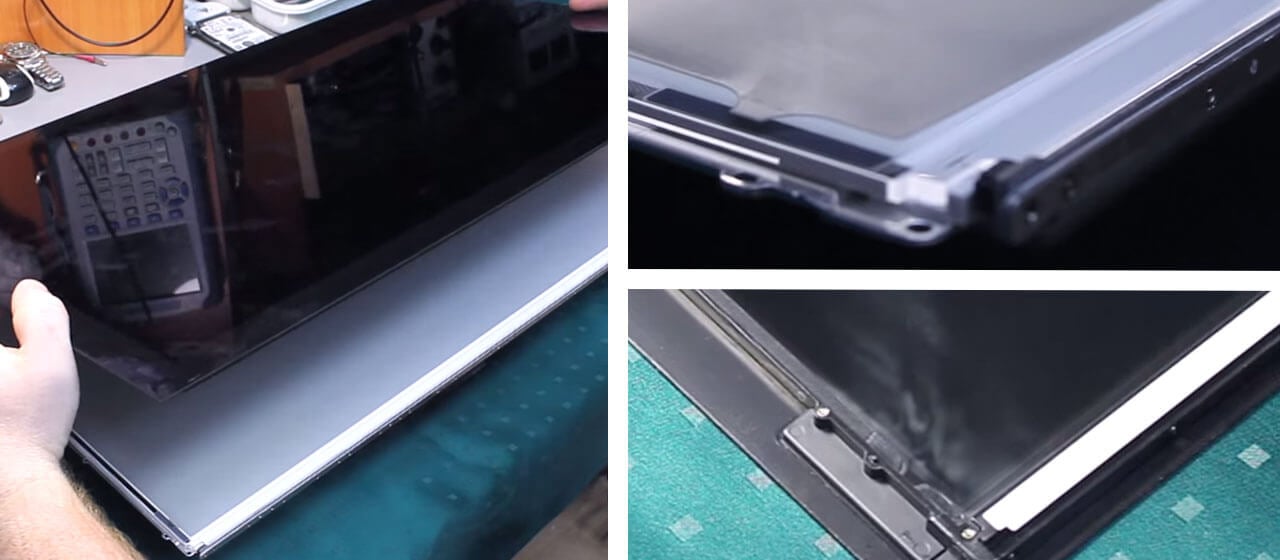
Now you can clearly see the dust that was collected between these components.
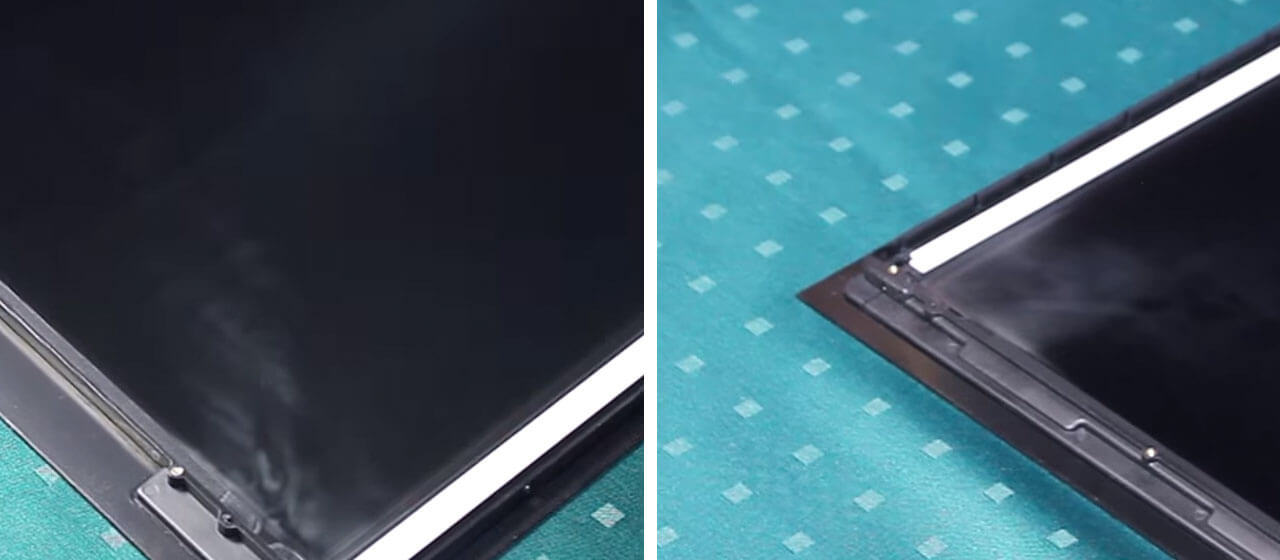
Note: dust enters the matrix iMac (in the vast majority of cases) under the influence of its own cooling system, in the same places: the photo below clearly reveals a gap in the defense of Apple: In the accidentally missed by the engineers technological hole easily passes not the thinnest wire, what can we say about the smallest particles of dust.
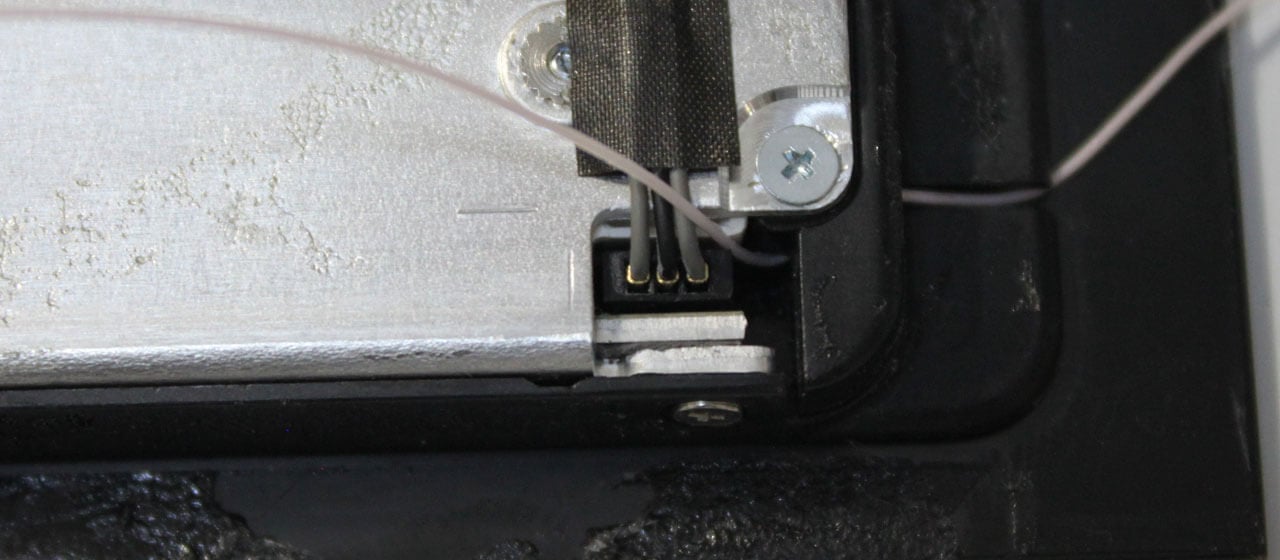
When cleaning old-generation displays, it was very convenient to use a compressor or at the very least a special cleaning roller, similar to a clothing cleaning tool, but with a softer surface. Widely distributed cylinders with compressed air (sold in "computer supermarkets") colleagues did not recommend use, because in them much more often than in the capacity of a professional compressor, condensation is formed, which can get not only active layers in the form of small drops of moisture, but also on the top of the backlight layers, where to remove them without a trace will be very difficult.

Now, good quality textiles are more suitable for removing dust, as you guessed it, with the use of microfiber ("microfiber"), the main requirement is ideal cleanliness (it is better to take a new napkin directly from the package) and a minimum fiber size. Very good with this task cope with special wipes from Defender, but there is no fundamental difference.

Especially seriously, the engineer from MacPlus, who cleaned the matrix with us, asked us to treat the light itself, that is, to the light scattering layers: by default they are perfectly aligned, but if you accidentally touch them during cleaning, it is unlikely to be achieved again again, therefore Before the beginning of the cleaning, we have additionally fixed the layers with usual technical clamps (they can be found in "Housewares", on radio markets or in the same "Chip-and-Dip").
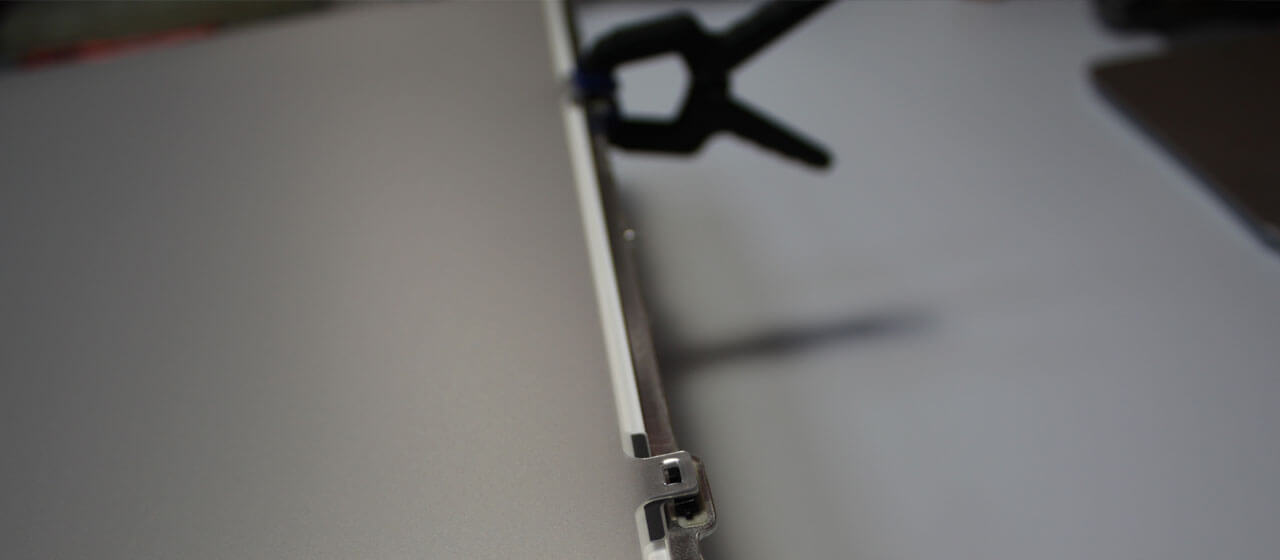
After making sure that not a single speck of dust remains, we reassemble the display module and put it back into place. Beforehand (even before you screwed all the screws in the display case), it is recommended to turn on the screen and check if there are any small lumps or dust left on it, since it is much more difficult to replace flaws when turned off.

Having convinced that the display is all right, we finish its assembly.
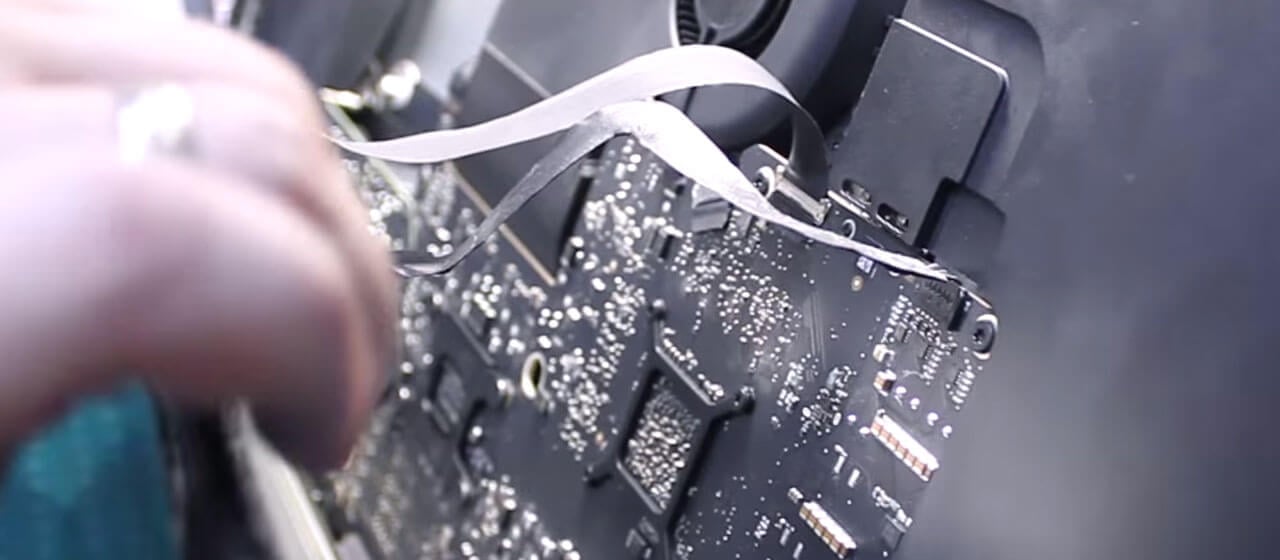
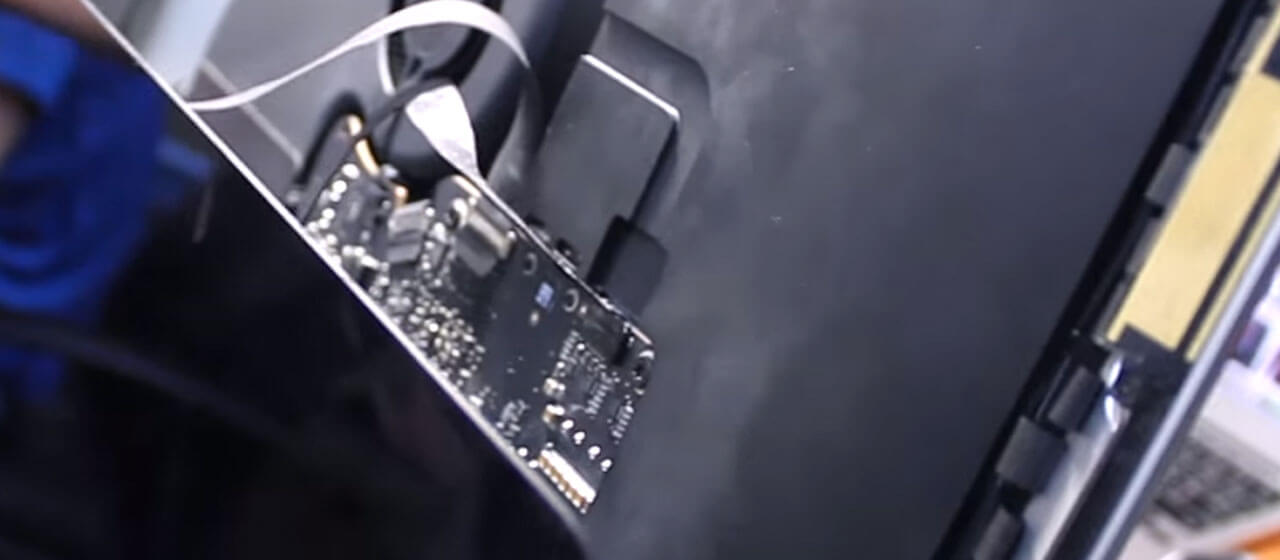
We securely glue the perimeter of the matrix housing with heat-resistant tape, especially the aforementioned holes in the lower part of the screen. Then we apply scotch 3M on the body of the monoblock itself.

A few more minutes - and we got a "new" thin iMac with an ideally clean matrix, without any traces of the autopsy. You did not have to change it, as you can see. And is it worth it to buy a new far not cheap display once in 1-1.5 years, which is most likely the problem will appear again? .. Of course, no, especially considering that our colleagues have learned to collect the matrix "correctly" - this will minimize the possibility of a re-occurrence of the problem. Additional sealing is never superfluous, right?
Of course, it is better to do such work if you have the experience, at a pre-prepared place, observing the maximum possible purity, otherwise the dust particles flying in the air will negate all your efforts. To open thin iMac, you may need a special tool (reminiscent of a knife for cutting pizza), which is sold by our foreign colleagues from iFixit, but you can do without it if you want.
By the way, during the "procedure" we looked at a few interesting cases: in MacPlus not only clean the matrix - colleagues have enough experience to eliminate problems with power, lighting, cleaning and repair of flooded or burnt motherboards, in a word - they can perform absolutely any repairs Apple. Let's hope that soon we will come back here, because the guys definitely have something to tell.
The article is based on materials .
- Get link
- X
- Other Apps
Comments
Post a Comment